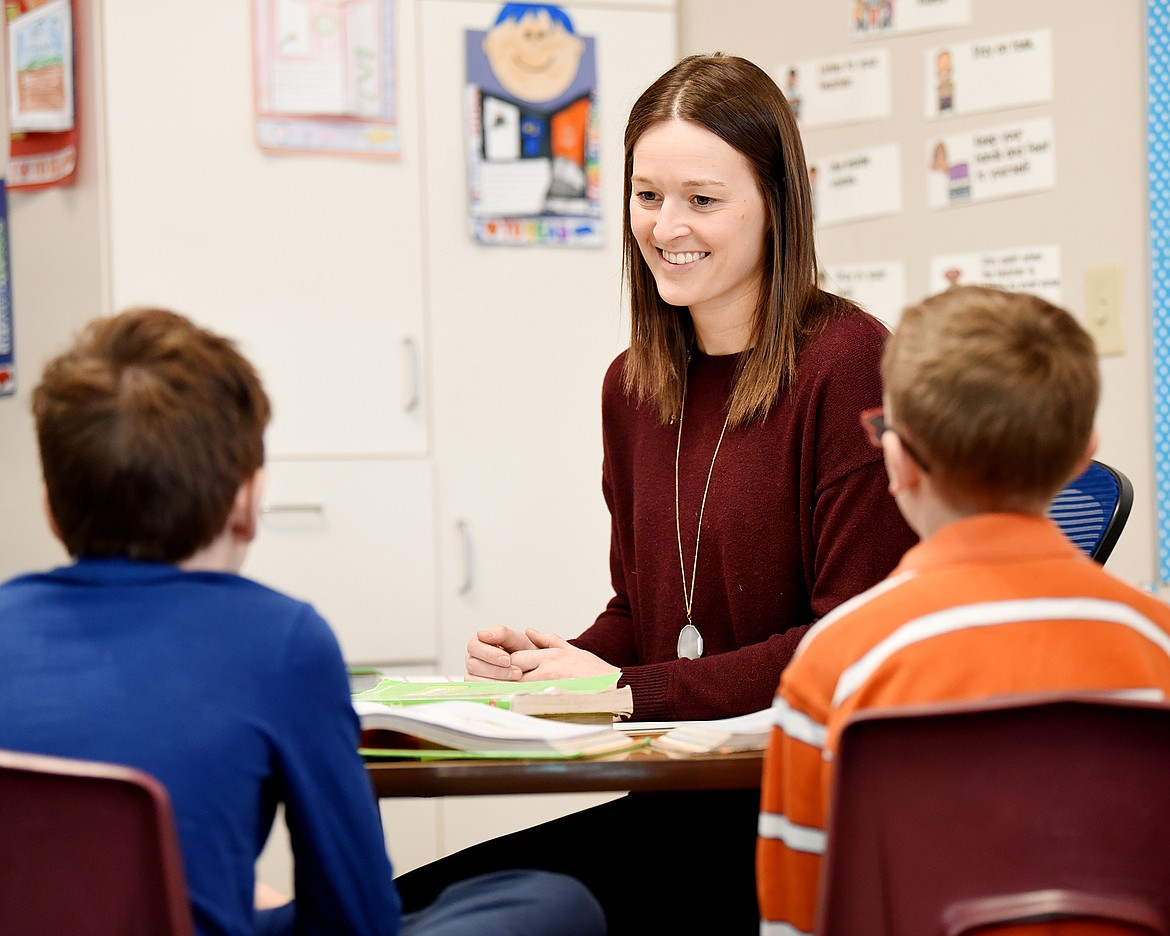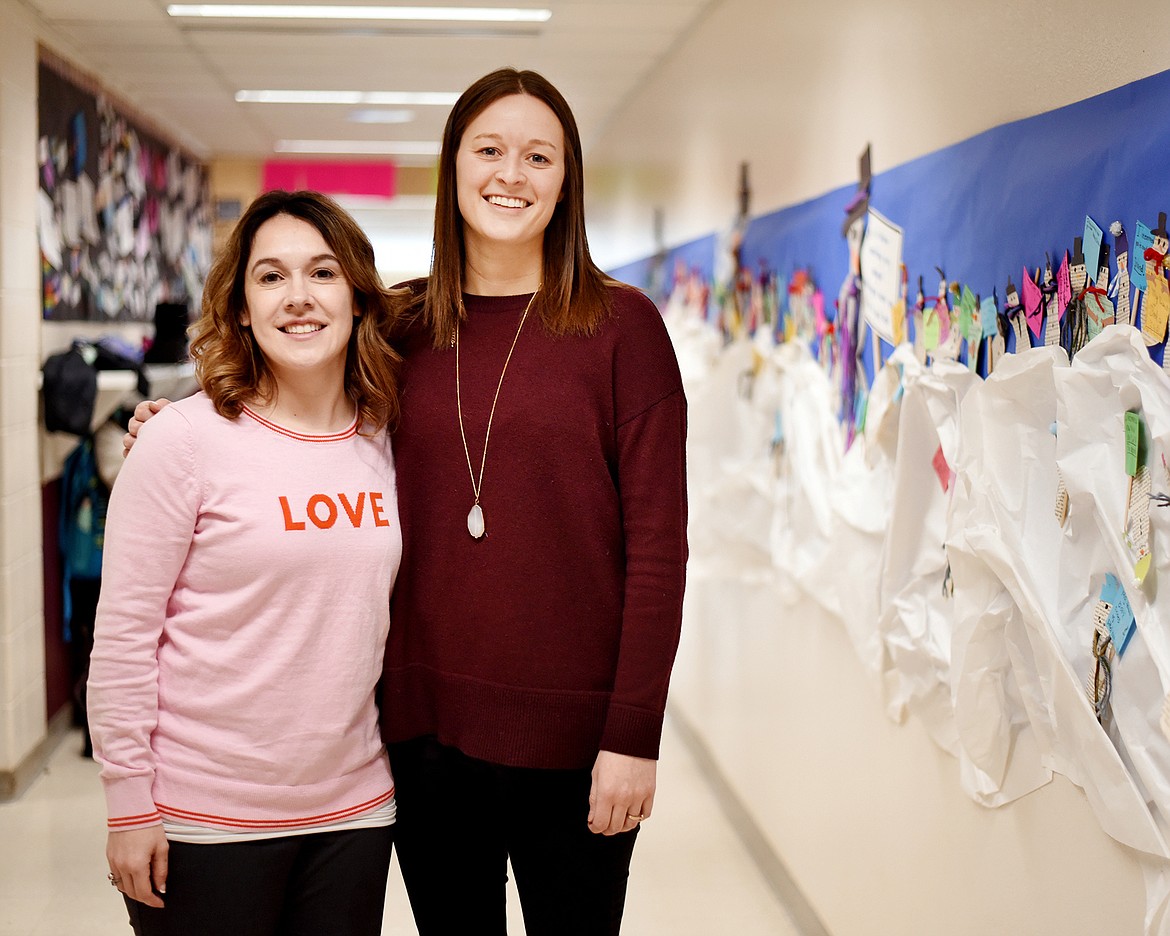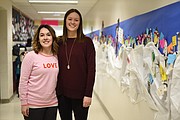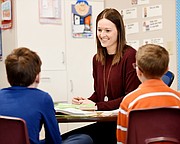Staff shortages challenge special-ed programs
Facing a nationwide shortage of teachers — and special-education teachers in particular — schools in Montana are feeling it acutely as the number of students receiving special-education services is on the rise.
Statewide there are 18,803 students receiving special-education services. This is a more than 10 percent increase over the past five academic years. In the 2013-14 school year there were 17,032 special-ed students.
Within the region of Flathead, Lincoln, Lake, Sanders, Mineral, Missoula, Ravalli counties, the number of students receiving special-education services has increased by 13 percent over the past five academic school years. That percentage represents 4,849 students in 2013-14, up to 5,509 in the 2017-18 school year.
Students in special education represent 13 percent of total enrollment in Montana schools, which is 146,772 students. Students with disabilities are entitled to a Free Appropriate Public Education under the Individuals with Disabilities Education Act.
Despite the increasing numbers of students needing services, special-education positions consistently fall into the Montana Office of Public Instruction’s Critical Quality Educator Shortages report.
The annual report identifies specific schools and cooperatives facing challenges in filling teacher, specialist, administrator and licensed professional vacancies specifically in rural, or isolated areas.
In the state’s most recent report for the 2018-19 school year, special-education teacher ranked No. 1, speech-language pathologist No. 7, and special-education supervisor No. 9 on a table of 13 fields. Among other fields listed are art, music, math, English, superintendent, history, languages, counselor and library positions.
When looking at fields showing a trend of critical shortages, special-education teacher also held the top spot on a list of 10; speech-language pathologist was listed at No. 7.
Special Education Cooperative Director Cheryl Russell noted, for example, that there were months when a speech-language pathologist vacancy posting didn’t attract applicants. The cooperative is listed as one of the facilities in Flathead County that is impacted by the critical quality education shortages.
“We have had difficulty; until recently we had three applications,” she said.
The cooperative fills a necessary role in getting specialized professionals such as speech-language pathologists, occupational therapists, physical therapists and school psychologists into rural districts. School districts that become cooperative members are assessed a fee. Currently, the cooperative serves 16 rural elementary school districts in Flathead, Lake and Lincoln counties. The cooperative has a staff of about 26 professionals who travel to different schools to provide services.
Even though a school district isn’t in the report, it doesn’t mean they have difficulty filling vacancies with qualified applicants. Rankin Elementary Principal Merisa Murray said she’s had to be proactive in searches as soon as notice is given about a vacancy. She used an example from when she was principal at Edgerton of having to advertise three separate times for a special-education teacher before hiring an out-of-state applicant. She was also on a committee that advertised a school-psychologist position about a year in advance.
For some people wanting to go into special education, getting the proper post-secondary education and licenses may be a barrier whether due to time, money or access.
The state has come up with an alternative pathway for certified general-education teachers to get the necessary credentials in an effort to get teachers into special education. The Office of Public Instruction Special Education Endorsement Project, which started in 1987, operates out of Montana State University-Billings, receives a portion of grant funding from the state.
The project allows certified teachers in a school district that is unable to hire a teacher with a special education endorsement, to obtain the proper credentials through Montana State while working on a provisional license with students under the supervision of a special-education teacher.
“That program has been full,” state Special Education Director Frank Podobnik said. “We increased the amount of money made available a couple years ago because there’s been a waiting list, so it’s been pretty successful — it doesn’t fill all the gaps — but it has helped.”
One reason cited by educators for the difficulty finding speech-language pathologists, is that it requires a master’s degree at a minimum, in addition to completing hours in a clinical setting. Speech-language pathologists also have to pass state and national exams.
The University of Montana currently offers the only accredited graduate speech-language pathology program in the state, according to the American Speech-Language-Hearing Association. Yet, there was a period of time the program was discontinued.
During that time, Trisha Quiram, a speech-language pathologist at Ruder Elementary in Columbia Falls, made the decision to go into the profession and had to enroll in an out-of-state program. She completed the majority of coursework online through the University of Northern Colorado. She then had to travel to Colorado for about a month to complete clinical hours and remaining coursework. Then she returned to Montana, where she arranged placements in schools to put in therapy hours and finally finish the program. Jumping through the additional hoops was worth it to Quiram, who received her master’s degree in 2014.
“I knew I wanted to work with kids,” Quiram said.
She knew she wanted to be in a school setting, but wanted to work with small groups as opposed to managing a large classroom. She found a match in the speech-language pathologist profession. And job openings were plentiful once she graduated.
Schools that may not have the resources to go out and actively recruit special-education staff may hire an organization such as the Montana Council of Administrators of Special Education Montana School Recruitment Project, which travels around the nation to recruit at colleges, communicate with candidates, assist in writing job descriptions and marketing positions. Project Director Lori Ruffier, who is also a part-time school psychologist in Deer Lodge, said the goal is to seek out and match candidates with schools where special-education philosophies align and there’s a fit with a school culture to help increase retention rates.
One of the challenges of recruiting speech-language pathologists, therapists and psychologists is that the private sector typically pays higher wages, according to Ruffier, however, the cost of living is lower in many rural communities. Edgerton and Rankin school psychologist Bryan Barber said the educational setting appealed to him for the regular hours, holidays and vacation. He also said that he wasn’t interested in the business aspect of setting up a private practice and building clientele.
Part-time positions may be especially hard to fill or ones with large caseloads. When it comes to caseloads, there aren’t regulations in Montana.
Kalispell Public Schools Director of Special Education Sara Cole said other special-education directors throughout the valley meet regularly. Caseloads have been a topic that comes up.
“I’ve really tried to work with the other special-education directors in the valley to create some norms and make sure that we’re able to meet our student needs by staying within those norms. So when we hit certain numbers of students per case manager we come up with creative ways of shifting responsibility or add FTE (full-time equivalent),” Cole said.
Although Barber is responsible for Edgerton, Kalispell’s largest elementary, he said all staff share in the responsibility of trying different interventions before referring students for special education. Barber has worked 27 years in the school district.
“Back in the old days when I first started doing this work, at the first sign of a problem people looked at special ed first, but now we’re a little smarter,” he said, noting tiered systems of support used to address academics and behavior. “When we do it as a team, as a shared responsibility, I don’t always feel responsible for coming up with a solution.”
Working in special education takes an incredible amount of patience, diligence and compassion. Perhaps the driving force behind it all was encapsulated by one word spoken by nearly every special educator interviewed, which was “passion.”
“A lot about being a special educator is finding the passion and helping students find their success in the classroom,” said Jenna Pitsch, a kindergarten through fifth-grade special-education teacher at Edgerton Elementary.
Reporter Hilary Matheson may be reached at 758-4431 or hmatheson@dailyinterlake.com.








